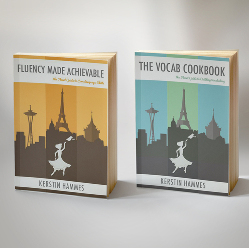Natural speed please. This text is for ESL high school students. They are going to study this article. As it is a bit long and difficult, I would like to play an audio of the document before studying it.
Thank you!
(The article was taken from QZ.com, and only a bit trimmed here and there)
Women are invoking the witch to find their power in a patriarchal society
By Sofia Quaglia
Published on QUARTZ October 31, 2019.
The cult of the witch has inundated American culture yet again. Witch-themed movies and series, from Sabrina and the Craft, to Suspiria and the upcoming sequel to Hocus Pocus, have everybody spellbound. Universities across the nation offer courses on the history and symbolism of witches. Pop stars such as Azealia Banks, Bjork, Lorde, and Lana Del Rey are evoking witches, either by casting spells or by simply embracing the witchy aesthetic. Witch-themed self-help books and spell books are flooding bookstores.
The symbol of the witch has endured over centuries as a representation of female empowerment. As the outsider with uncanny power, the witch represents a challenge to patriarchal narratives. The witch’s omnipresence in literature, cinema, and pop culture reflects the depth of Western society’s obsession. Today, the symbol is taking on new resonance, both spiritually and symbolically, as activists fighting for their gender, politics, sexuality, or environmental health invoke the witch as a statement of strength and empowerment. […]
The making of the witch
Scholars believe that the concept of the witch dates back to thousands of years ago, as long as humans have worshipped deities, and arose independently in several cultures across centuries. In Greek mythology, the first witch was Hecate, the Goddess of magic and astrology; in Yoruba tradition, the witch was a wise woman invested with the power of the trickster. And while some of these women were in fact practicing spiritual rituals, most of them were simply healers or wise elders.
In the 1400s, however, society no longer viewed these women as healers bringing about good. […] Powerful women became demonized. The word “witch” officially became a pejorative term around 1468 when German churchman Heinrich Kramer published Malleus Maleficarum (“The Hammer for Witches”), a medieval treatise on how to hunt “witches”—women who he deemed to be morally corrupt. The publication of this book, which coincided with a general sentiment of fear, spurred the heyday of the witch hunt : In Europe, between 1500 and 1660, local governments murdered up to 80,000 women thought to be witches.
Whether or not they did so consciously, the people driving the witch hunt preserved the burgeoning patriarchy. They perpetuated myths of women being associated with the devil or doing black magic. They were intimidated by women with power (magic or socioeconomic); […] Women were single, widowed, old, or not often in church; if they owned too much land, or were healers or midwives; if they were spending too much time socializing with one another could give men in power cause to accuse them of being witches.
Embodying the archetype
US-based activists are also invoking the witch as a symbol of political resistance. [Environmental activists] are looking to witches to represent their longing to go back to natural and environmentally-conscious ways of life, one of increasing resonance to a planet in the midst of a climate crisis. Because a witch can be a woman who worships Mother Earth and the moon and who looks to botany for healing, invoking witches reminds us that humans are at one with the Earth and must work with it to survive in the long term. […]
Witch away
Women today aren’t just accepting the symbol of the witch—they’re building on it to create a figure that is more inclusive and intersectional.
Feminist activists and progressive social media influencers are also actively working to dispel the dichotomy between the good witch and the bad witch, which is often reflected by different beauty standards, in which ugly equals evil. Powerful women are all colors, shapes, and sizes—but never monstrously green. Now, by creating a more complex picture of the witch, women are adding dimensions to what it means to be a woman.

